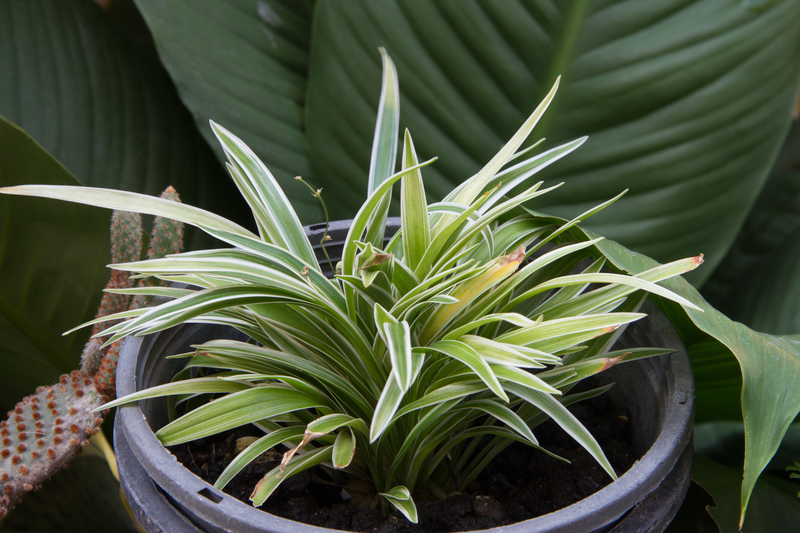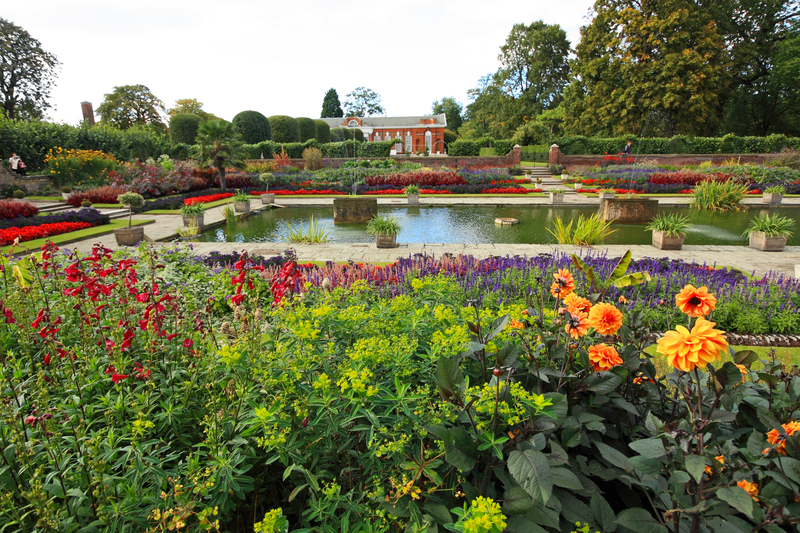Precision and Creativity: Advanced Hedge Trimming Shapes and Techniques
Posted on 02/07/2025
Precision and Creativity: Advanced Hedge Trimming Shapes and Techniques
Discover the captivating art of advanced hedge trimming. This comprehensive guide explores the precision, creativity, and skills required to sculpt living masterpieces in gardens and landscapes. Elevate your garden design with expert insight on topiary, geometric designs, and imaginative techniques for stunning hedge shapes.
Introduction to Advanced Hedge Trimming
Hedges offer more than just boundaries or privacy for your property; they can be transformed into living sculptures that add personality and sophistication to any landscape. Advanced hedge trimming techniques combine precision and creativity to shape hedges into eye-catching figures, elegant curves, or dramatic geometric forms. By mastering these techniques, you can create unique focal points that express your artistic vision and enhance curb appeal.

The Importance of Precision in Hedge Trimming
Precision is an essential aspect of advanced hedge shaping. Meticulously trimmed hedges not only look visually appealing but also remain healthier. Accurate cutting reduces stress, prevents disease, and encourages dense growth. When working with intricate forms, precision ensures that the design integrity is maintained season after season.
- Regular maintenance: Precise, regular trims keep growth dense and shapes crisp.
- Long-term health: Clean, sharp cuts reduce the risk of disease and die-back.
- Defining details: Precision makes geometric and figurative shapes stand out.
The Role of Creativity in Hedge Design
While technical skill is vital, creativity transforms your hedge trimming projects from routine maintenance to landscape artistry. Advanced hedge shaping allows gardeners to experiment with forms, themes, and visual illusions, turning ordinary hedges into extraordinary features. This fusion of imagination and skill attracts admiration from all who see your garden.
Benefits of Creative Hedge Shaping
- Personal expression: Showcase your personality and unique aesthetic taste.
- Themed gardens: Bring stories or scenes to life through hedges shaped as animals, objects, or patterns.
- Seasonal highlights: Enhance your landscape during events or holidays with themed hedge sculptures.
Types of Advanced Hedge Trimming Shapes
The world of advanced hedge trimming offers endless possibilities. From classic geometric forms to elaborate topiary, here are the most popular styles to consider:
1. Geometric Hedge Shapes
Geometric designs are timeless classics. By precisely creating spheres, cubes, cones, or pyramids, you can introduce structure and elegance to your garden. Geometric hedge trimming demands a keen eye for symmetry and proportion, but the results are strikingly neat and formal.
- Spheres and balls
- Cubes and rectangles
- Pyramids and cones
- Arches
2. Topiary Art and Figurative Shapes
Topiary is the ultimate celebration of creativity in hedge shaping. Whether it's spirals, animals, letters, or fantastical creatures, topiary provides endless scope for expression. This technique is closely associated with classical European gardens but adapts beautifully to modern landscapes.
- Animals (birds, rabbits, elephants)
- Spirals and corkscrews
- Letters or numbers
- Seasonal or holiday shapes (eggs for Easter, stars for Christmas)
3. Organic and Freeform Silhouettes
Not all advanced hedge shapes must follow strict lines. Organic trimming allows for gentle, freeform curves and flowing silhouettes, evoking natural landscapes or abstract art. These techniques create soft, harmonious garden scenes perfect for relaxed settings.
- Cloud pruning (rounded, undulating mounds)
- Wave patterns
- Undulating hedgerows
Essential Tools for Advanced Hedge Shaping
Precision and creativity in hedge shaping depend on the quality of your tools. Investing in the right equipment and maintaining it regularly is half the battle won. Below is a well-rounded toolkit for advanced hedge trimming:
- Hedge shears: For clean, straight cuts on large surfaces.
- Sculpting scissors: Small, sharp blades allow for delicacy in detail work.
- Battery or electric trimmers: Efficient for smoothing and shaping edges rapidly.
- Topiary frames: Guide complex shapes for beginners and intricate projects.
- String and stakes: Useful for marking perfect lines, levels, and shapes.
- Measuring tape and spirit level: Ensure symmetry and proportion.
- Protective gear: Safety for eyes, hands, and ears is vital.
Step-by-Step Guide to Advanced Hedge Trimming
Ready to undertake your own advanced hedge shaping project? Whether you're crafting geometric forms or initiating topiary art, these steps will help you achieve precise and creative results:
Step 1: Select the Right Hedge Plant
Not all hedge species respond equally to advanced shaping. Choose dense, small-leaved, and vigorous-growing plants to ensure sharp lines and healthy regrowth. Popular choices include:
- Boxwood (Buxus sempervirens)
- Yew (Taxus baccata)
- Privet (Ligustrum spp.)
- Lonicera nitida
- Holly (Ilex spp.)
These species tolerate frequent trimming and recover well from shaping.
Step 2: Plan Your Design
Before picking up your shears, envision your finished sculpture. Draw sketches or use topiary templates to develop your ideas. For geometric shapes, measure heights and widths. For creative forms, consider using pre-made topiary frames for guided shaping.
Step 3: Prepare the Hedge
- Remove debris, dead wood, and uneven shoots.
- Check for pests or diseases and treat accordingly.
- Ensure the hedge is healthy and well-watered in the weeks before trimming.
Step 4: Begin the Initial Cut
Start with rough shaping, removing large unwanted growth. Establish the basic outline, being conservative--it's easier to remove more material than to fix an overzealous cut.
Step 5: Refine and Detail
- Compare each segment for symmetry using measuring tools and string guides.
- Shape slowly, assessing from various angles to ensure consistency.
- For intricate shapes, use hand shears to refine curves and edges.
Step 6: Final Checks and Clean-up
Step back, view the result from different vantage points, and make final touch-ups. Clear away cuttings and debris to leave the scene tidy and highlight your handiwork.
Maintenance of Advanced Hedge Shapes
Achieving a beautiful hedge shape is only half the story. Ongoing care and maintenance are essential to retain the crisp lines and healthy appearance of your living sculptures.
- Frequent trimming: For most species, trim 2-4 times per growing season.
- Watering and feeding: Hedges in intensive shapes need regular watering and slow-release fertilizer.
- Pest and disease monitoring: Quickly address any outbreak to prevent shape distortion.
- Winter protection: Consider temporary covers for delicate, newly shaped topiaries.
Expert Tips for Perfect Hedge Trimming Shapes
- Work slowly and methodically: Precision is better than speed for complex designs.
- Regularly sharpen all cutting tools: Dull blades can shred branches and invite disease.
- Study historic and modern topiary for inspiration: Gardens like Levens Hall (UK) and Chateau de Villandry (France) offer world-renowned examples.
- Use sunlight to your advantage: Trimming when the light is at your back highlights uneven lines.
- Maintain a slightly wider base in tall topiary: Prevents top-heavy shapes and ensures sunlight reaches all layers.
Common Challenges in Advanced Hedge Trimming
Even skilled gardeners face certain hurdles when pursuing creative hedge shaping. Being prepared for these issues will help you confidently tackle your trimming projects:
- Inconsistent growth patterns: Prune more aggressively in vigorous sections; allow weaker parts time to fill out.
- Diseased or pest-infested areas: Address promptly with organic or chemical controls to prevent loss of shape.
- Weather impacts: Extreme heat or frost can damage new growth; avoid trimming during these periods.
- Outgrowing frames: Regular care and timely trims keep intricate shapes from deteriorating.
Inspiring Advanced Hedge Trimming Designs
Looking for inspiration? Here are some remarkable hedge designs that demonstrate the heights of precision and creativity:
- The chess set topiary: Giant pawns, knights, and rooks sculpted from yew or boxwood.
- Maze hedges: Complex labyrinths of precisely defined corridors.
- Animal arches: Walkways crowned with leaping dolphins or soaring birds.
- Cloud pruned borders: Japanese-inspired low, rolling waves of evergreen.
- Celebratory forms: Hedges transformed into birthday numbers or hearts for anniversaries.
The key is to blend structural clarity with personal or site-specific creativity for a landscape that truly stands out.

Conclusion: Express Yourself with Advanced Hedge Creativity
Whether you favor the tranquil lines of geometric hedge shapes or the playful allure of creative topiary, mastering advanced hedge trimming is a fulfilling journey. Precision and creativity are the heart of transforming routine hedges into garden landmarks that inspire joy, reflection, and conversation.
With proper planning, the right tools, consistent maintenance, and a spark of imagination, your landscape can become a gallery of living art. Begin your advanced hedge trimming adventure today and watch as your garden is elevated from ordinary to extraordinary, one snip at a time.
Frequently Asked Questions about Advanced Hedge Trimming
What are the best plants for creative hedge pruning?
Boxwood, yew, privet, and holly are ideal choices due to their dense foliage, rapid healing, and tolerance for shaping.
How often should I trim advanced hedge shapes?
Trim at least 2-3 times per growing season to retain the clean lines and healthy growth essential for advanced designs.
Can beginners attempt topiary and geometric hedges?
Yes! Start with simple forms and use topiary frames for guidance. Progress to more complex designs as your confidence and skills grow.
Is professional help needed for intricate hedge designs?
For large or highly detailed projects, consulting a professional topiarist may be beneficial. However, with practice and patience, many home gardeners achieve beautiful results on their own.
Why are precision and creativity both crucial in hedge shaping?
Precision ensures plant health and the integrity of intended forms. Creativity brings uniqueness and delight, turning the garden into a personal work of art.
Transform your landscape with the magic of advanced hedge trimming--where artistry meets horticulture, and every snip brings your creative vision to life!

